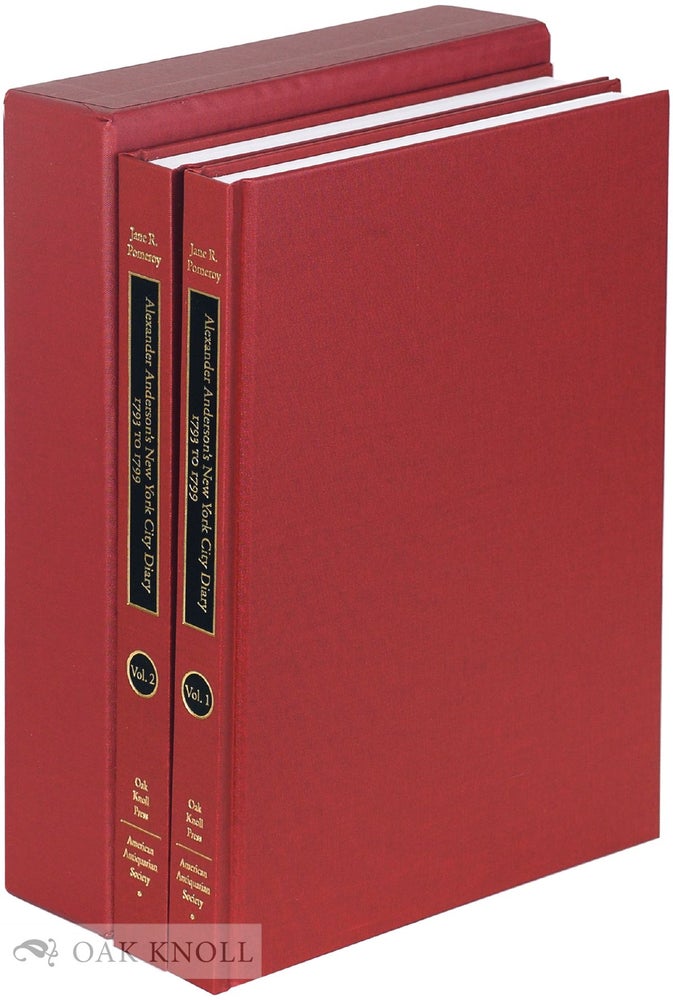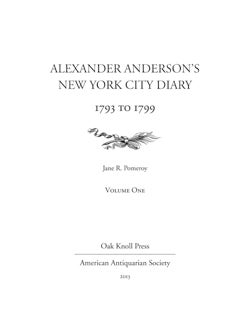ALEXANDER ANDERSON'S NEW YORK CITY DIARY, 1793 TO 1799.
- New Castle, Delaware: Oak Knoll Press and American Antiquarian Society, 2014.
- 8.5 x 11 inches
- hardcover, slipcase
- 688 pages in two volumes
- ISBN: 1584563257
- ISBN: 9781584563259
Price: $125.00 other currencies
Order Nr. 114714
This work for the first time presents the complete transcription of the diary of Alexander Anderson (1775-1870), the father of wood engraving in America. It starts at the beginning of his career and covers almost six years of daily entries. Comprehensive footnotes identify the books he illustrated during those years (included in a checklist), literature he sought to help him in engraving techniques, his earnings from commissions, and more. Ten chapters from author Jane R. Pomeroy explore themes apparent in the Diary: the places and persons he mentioned and the social climate and urban history that he experienced. An Appendix lists some 300 books that he mentioned reading.
As might be expected, during the almost six years he kept the Diary, Anderson changed and matured. He was eighteen years old the first year and twenty-four at the last entry in June, 1799. His life during those six years shaped his work. By the end of the Diary, he had married, lived through the deaths of his wife and infant son and of all his family, and two of the city's yellow fever epidemics. It took these life changing events and his success in being hired by printers and publishers to make him abandon the career in medicine that had been chosen for him by his parents and turn to his first love and passion, engraving.
The engravings mentioned in his Diary are from the beginning of his work, only a few of the over 9,000 images he produced in his ninety-five-years. He mostly devised his skills for himself, initially inspired by the great English wood engraver, Thomas Bewick. Anderson is often named as the first American illustrator who cut on the end grain of boxwood, which both allowed a resilient commercially practical woodblock and one with a wide artistic range.
His diary is a record of daily occurrences, of patients that he did his best to help, of friends and walks in the city and time spent reading and playing his violin, and it allows us to better understand his history and temperament by showing his surroundings and friends, how they influenced the choices he made in his work and its character.


